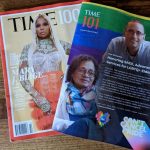New Yorkers who identify as LGBTQ+ or as gender nonconforming experience higher rates of depressive disorders and a lack of access to health care, according to a new report, underscoring the need for community-based, LGBTQ+-affirming care across the state.
According to the report, released Tuesday by the state Department of Health, the LGBO (lesbian, gay, bisexual or other sexual orientation) population is more likely to be at risk for health complications and not have health providers. A little more than 27% of transgender adult New Yorkers and 24% of LGBO adults do not have a personal health care provider, compared with 20.5% of all adults. About 19% of transgender adults do not have health insurance, compared with 14% of LGBO adults and 12% of all adults.
The data shows that LGBO adults are more likely to suffer from mental health issues. About 32% of LBGO people have been diagnosed with a depressive disorder, double the 16% figure for the general population. The contrast is even more stark for transgender adults, 38% of whom have been diagnosed with a depressive disorder.
LGBTQ+ people are also more likely to smoke and binge-drink. While about 12% and 17% of all adults smoke and drink, respectively, nearly 15% of LGBO adults report smoking and nearly 23% binge-drink. Almost 16% of transgender adults are current smokers, and 22% binge drink.
About 10% of the LGBTQ+ people surveyed reported a household income of less than $25,000, and nearly 11% reported having a disability.
LGBTQ+ people are more likely to experience disparities because of a lack of affirming health care, said Christian Huygen, clinical psychologist and executive director of the Rainbow Heights Club, a nonprofit in Downtown Brooklyn that serves adults who identify as LGBTQ+ and have mental health diagnoses.
“Patients have experienced providers saying, ‘I don’t know how to deal with someone like you,’ versus providers saying, ‘What are your goals? I want you to have a healthy relationship and life,’” Huygen said.
Rainbow Heights provides referral support, support groups, group social activities and meal programs, and it provides health care providers with LGBTQ+ competency training and downloadables. It served 300 clients last year and provided 10,000 individual patient sessions, Huygen said. According to Huygen, it helps 95% of its clients stay within the community and out of the hospital.
Kraig Pannell, director of the state’s Office of LGBTQ Services, which helped put the report together, echoed that LGBTQ “people don’t seek health care, because they don’t feel welcome in those spaces.”
Christina Da Costa, senior director of communications at Sage Services and Advocacy for LGBTQ+ Elders, a Flatiron-based national nonprofit, said older people in the LGBTQ+ community are even more likely to experience health disparities because of a lifetime of stigma and discrimination. Some people have felt forced to go back into the closet to receive health care, she said, and if someone isn’t out to their provider, they might not get the care they need. According to Sage’s research, 40% of LGBTQ+ elders surveyed said their health care providers don’t know their sexual orientation.
“If we don’t have the data we don’t know what we should be offering and can be offering,” Da Costa said. “This data ensures outreach strategies are reaching these populations.”
The report is based on data collected in 2019 and 2020. It is the second LGBTQ+ population-specific report the DOH has conducted. It was released using the state’s Behavioral Risk Factor Surveillance System, an annual telephone survey since 1983. The first LGBTQ+ data report the DOH conducted was in 2013. With the new report, the state was able to identify the size and demographics of New York’s LGBTQ+ adult population.
The Bureau of Chronic Disease Evaluation and Research, part of the department’s Center for Community Health, led the research in collaboration with the DOH AIDS Institute’s Office of LGBTQ Services and the Office of Program Evaluation and Research.
The report, Pannell said, will enable the state to fund programs outside of urban areas so more people have access to affirming care. The report also can help providers understand where to allocate resources—and better understand the demographics of their communities.
“While the data can be discouraging, it’s the beginning of being able to address the problems, fund the services and create more services,” Pannell said. “I don’t think the LGBTQ+ population is unique in experiencing these issues, but when you shine a light on something you have to be able to address it.”
Almost 8% of the state’s adults—about 1 million people—identify as LGBTQ+. Of that population, 0.5% identify as transgender or gender nonconforming, according to the report.
The report is a starting point, said Haven Battles, assistant director of the Bureau of Chronic Disease Evaluation and Research, but future data collection needs to evolve.
“There are other risk behaviors and health outcomes to keep an eye out for,” Battles said. She added that surveys evolve based on the terms communities use to define themselves—which are always changing.
LGBTQ+ New Yorkers have faced decades of stigma and discrimination, exacerbating other social determinants of health, Pannell said.
“It’s been difficult for some care providers to understand that embracing someone’s sexual orientation or identity could be the keystone to their recovery, rather than an obstacle to be worked around,” Dr. Huygen said. “Now, a lot of mental health care providers are a lot more equipped to extend that support to LGBTQ+ people.”
New York’s enacted budget for the 2023 fiscal year includes an additional $7 million that will be provided to community organizations working to close health gaps within the LGBTQ+ community. —Jacqueline Neber
This article originally appeared in Crain’s Health Pulse New York.






